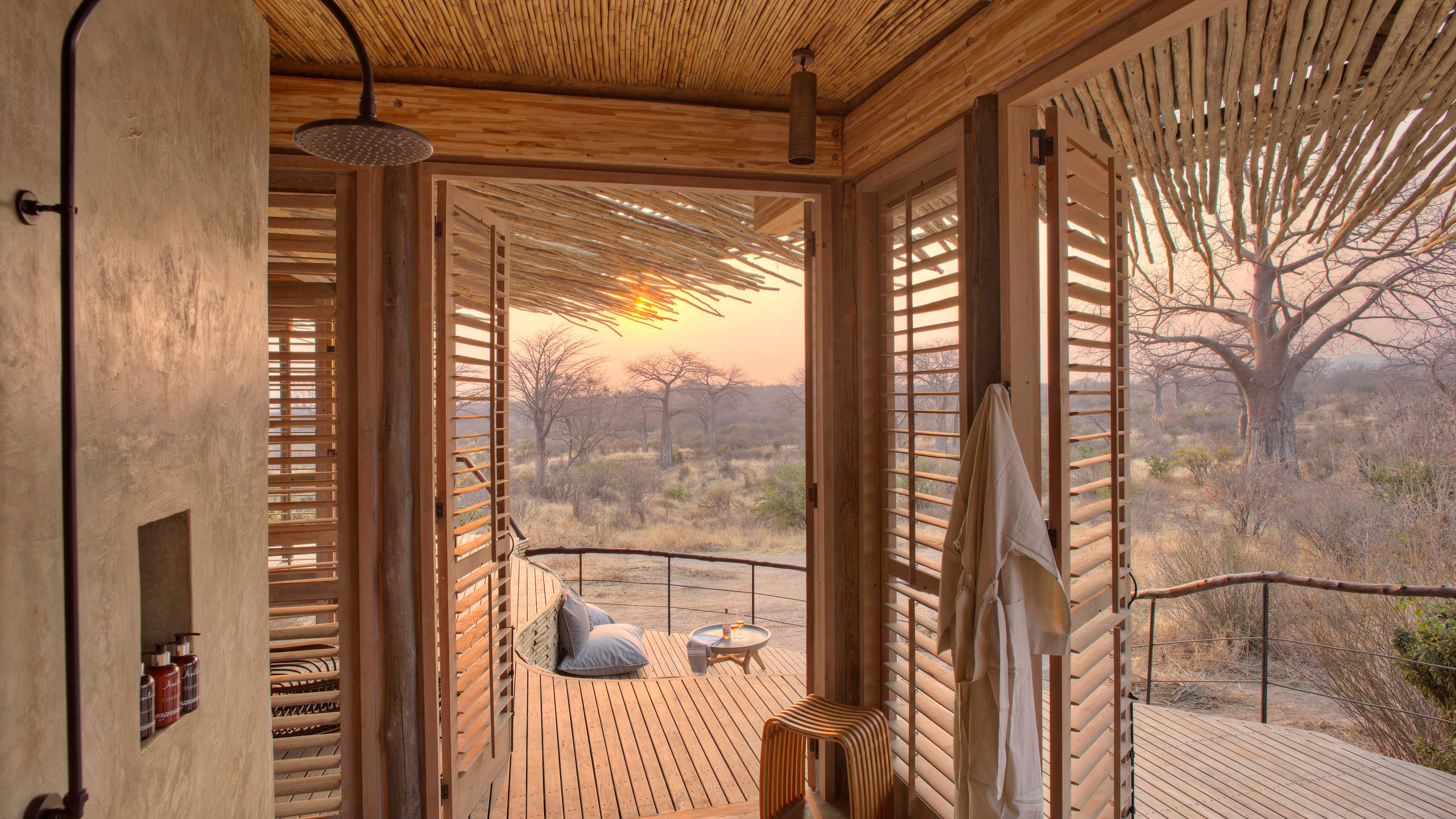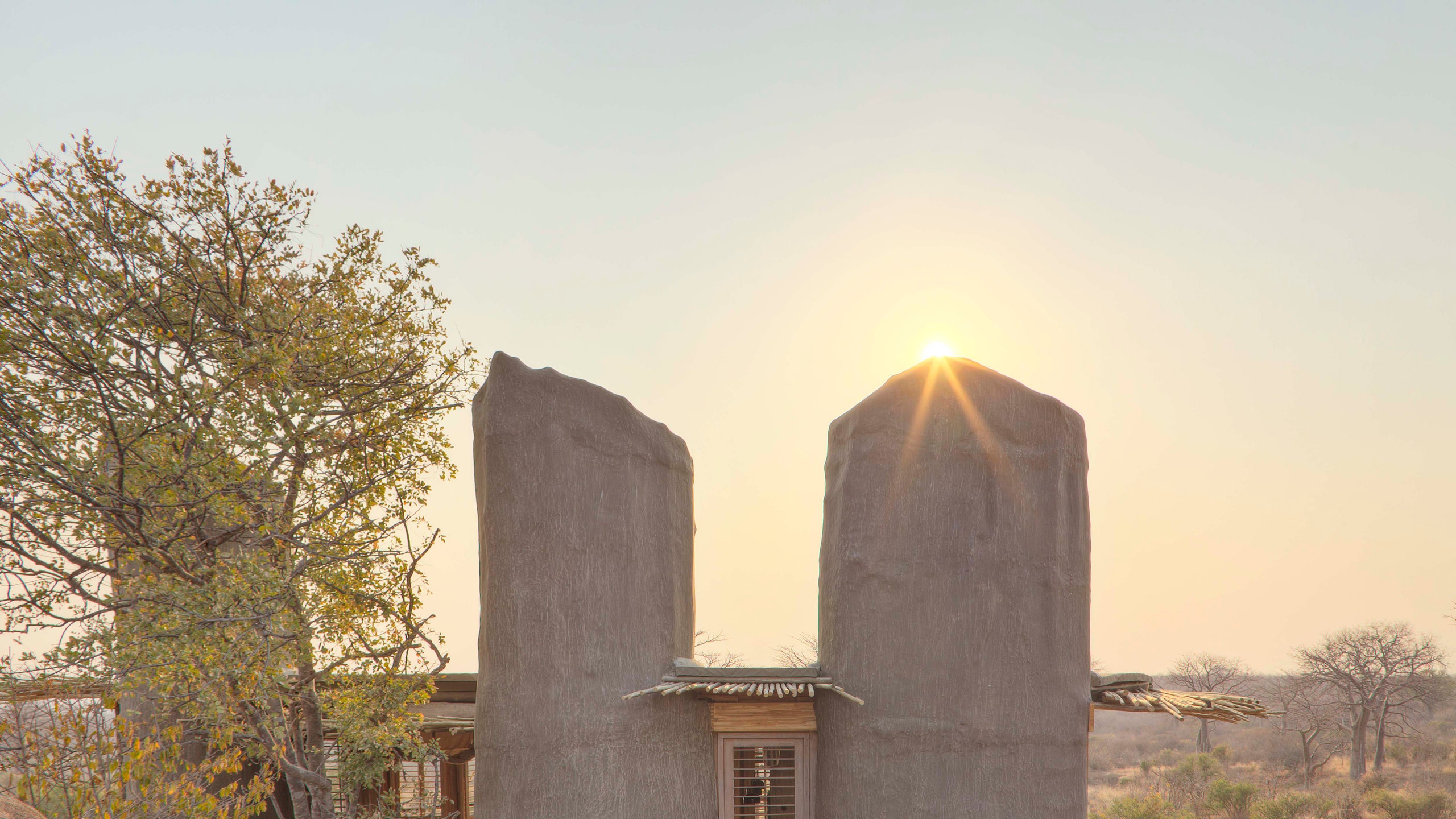Review: Asilia Jabali Ridge
Photos






Where is it?In Ruaha National Park in southern Tanzania. At 7,800 square miles, it’s the country’s largest park, forty percent bigger than the Serengeti. And while the Serengeti sees around 350,000 safari-goers a year, Ruaha draws just 20,000.
What’s the transfer experience like?You'll fly from the airport in Dar es Salaam in the morning (usually requiring an overnight in Dar the night before, if you're coming in on an evening international flight). It's a 1.5 to 2.5-hour trip (depending on which flight you take; some make an extra stop), during which the city quickly gives way to farms and then mountains and bushland. Upon landing at the airstrip in Msembe, you'll head out on a game drive to take you to camp.
First impressions?It’s nearly invisible until you’re upon it: The treehouse-like stilted bungalows of Jabali Ridge—enclosed by teak shutters and nestlike roofs—hide between giant boulders on a granite outcropping, giving panoramic views of the plains and baobabs.
Tell us about your room, tent, or villa (and how many are there total?)Each of the eight suites (plus one two-bedroom family room)have wide wrap-around decks with built in couches, the better for game viewing right from your room, should wildlife allow. Inside the shuttered walls—the front one of which can be folded open to better bring the outdoors in—a linen and mosquito-netting canopied and curtained bed holds pride of place, made up with soft sheets and hand-woven pillow covers. The beds are made of wood recycled from traditional dhow boats. I loved the double granite sinks set atop the wooden vanity in the ensuite bathrooms, each of which look like they're carved out of small boulders. There's also a WC and a large open rainfall shower. Elsewhere, additional local Tanzania artisanal accents include beaded ornaments. There's also an infinity pool and spa.
Let’s talk about the food. What can a visitor expect?Different meals serve up, variously, dishes based on South African braai barbecue, Zanzibarian curries, and some more continental cuisine. Lunches tend to be family style, while dinners are plated. You'll enjoy the morning meal out on safari, with bush breakfasts of coffee and tea, cereal and yogurt, egg sandwiches or wraps and sausages.
Now, about that safari...Ruaha National Park has ten percent of the world’s entire lion population, and East Africa’s highest concentration of elephants. So many buffalo roam its grasslands and ancient baobab forests that you often think you’re hearing distant thunder. On my recent visit, I found that it delivered big on wildlife and landscape, with no crowds, and was equally thrilled that, unlike many parks where you have to sit for hours in a jostling jeep to glimpse game, I was allowed—encouraged—to take guided bush walks.
If you had to award a trophy to a member of the staff, who would it be?Italian-born driver guide Lorenzo brings a joy and wonder to his safaris that makes you feel like he's seeing it all for the first time—even as his deep knowledge belies that. And he makes a mean G&T.
Bottom line: Why or why wasn’t this property worth the money, time, and effort to get here?
Jabali feels like the first truly luxe lodging in Ruaha, but it would impress even in an area with other equally cosseting competition. That, combined with the feeling like you're alone in the wilderness, makes it a winner.





